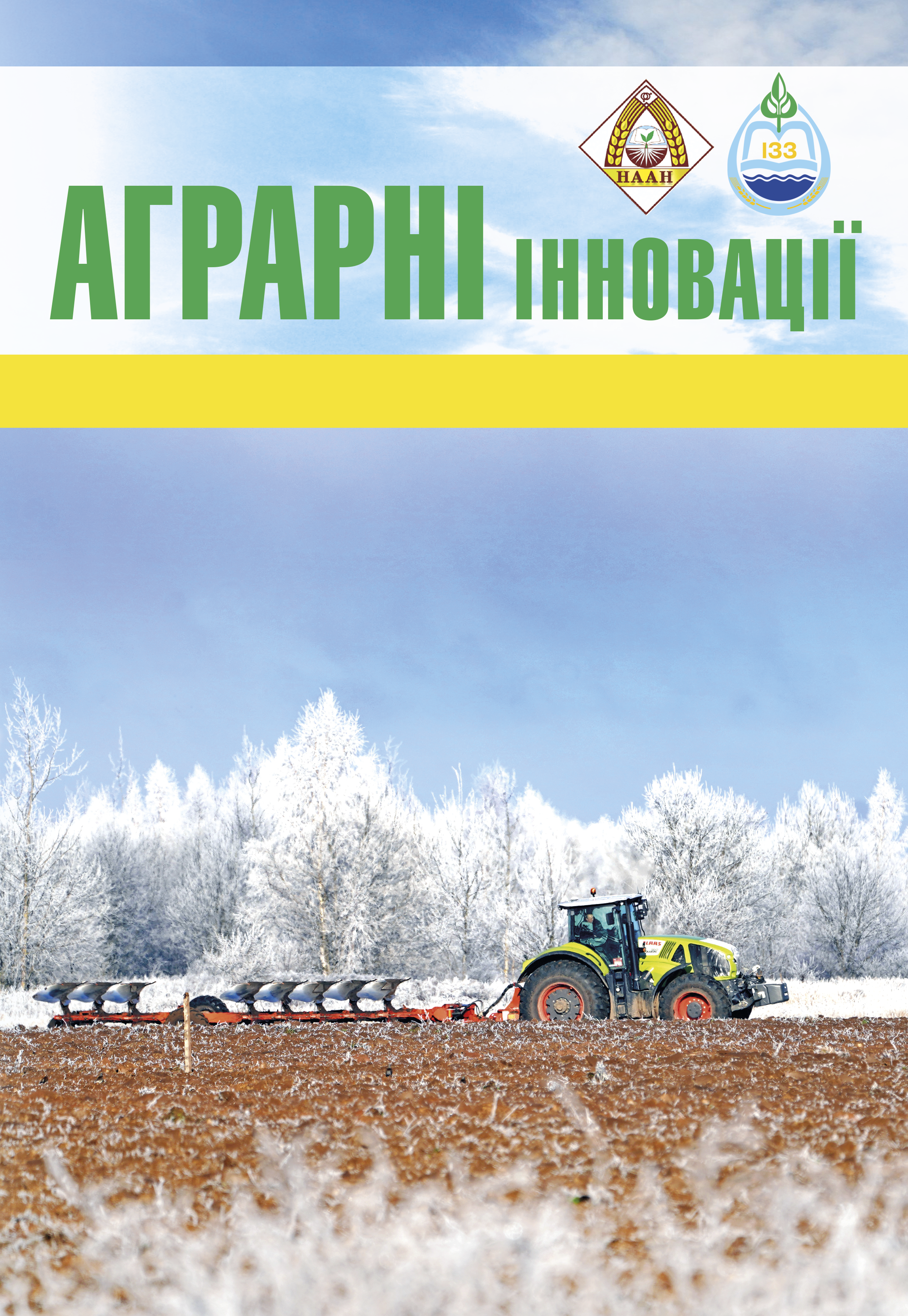Ecological and economic model of the formation of the added value chain for growing of medicinal plants
Abstract
The purpose of the study is to develop and improve the ecological and economic model of the formation of the chain of added value of the cultivation of medicinal plants. Methods In the conducted research, such methods as scientific abstraction and analysis were used to study modern trends in the field of cultivation of medicinal plants. An analytical approach was also used to examine the current state of the medicinal plant market. The results. The article highlights the stages of the formation of the added value chain of the cultivation of medicinal plants. A conceptual model of the ecological and economic formation of the added value chain of the cultivation of medicinal plants has been developed. It was determined that the conceptual model of the ecological and economic formation of the chain of added value of growing medicinal plants takes into account a comprehensive approach to the cultivation, processing and sale of medicinal plants, with an emphasis on ecological and economic aspects. It has been proven that the implementation of the ecological and economic model requires a comprehensive approach, which includes investment attraction, state support, and the development of partnership relations between business, scientific institutions, and the public. Such an approach will not only contribute to the sustainable development of the agricultural sector, but will also ensure the balanced use of natural resources, increase the quality of life of the population, and strengthen environmental security. After all, this model of ecologically and economically responsible development of the value chain in the field of growing medicinal plants represents an integrated approach that combines the principles of ecological sustainability with economic efficiency at every step from planting to selling products. Conclusions. The main goal of this model is to reduce the harmful impact on the environment by applying organic farming methods, saving natural resources and implementing environmentally friendly technologies. At the same time, the model seeks to increase product value through innovation, quality improvement, and branding strategies.
References
2. Нікішина О. В. Секторний аналіз доданої вартості товарів на інтегрованому ринку борошна. Економіка харчової промисловості. 2014. № 2. С. 46–54.
3. Коваленко О.В. Соціальні та комерційні вектори формування конфігурації доданої вартості у продовольчому комплексі. Продовольчі ресурси. Серія: Економічні науки. 2015. № 4. С. 74–80.
4. Брюховецька Н. Ю., Черних О. В. Формування доданої вартості на промислових підприємствах на етапах руху продукції від виробника до споживача. Стратегія і механізми регулювання промислового розвитку: Зб. наук. пр. Київ: ІЕП НАНУ. 2017. С. 32–41.
5. Плетньова Ю. К., Марченко В. М. Формування ланцюгів доданої вартості аграрного підприємства. БІЗНЕСІНФОРМ. 2018. No 4. С. 184–190.
6. Боднар О. В. Теоретико-методичні основи формування доданої вартості. Науковий вісник Ужгородського університету. Серія: Економіка. 2017. Вип. 1(2). С. 265–271.
7. Кравчук І. А. Методологічні основи формування доданої вартості продукції. Вісник Хмельницького національного університету. Економічні науки. 2017. № 1. С. 70–75.
8. Мірзоєва Т.В. Окремі аспекти формування доданої вартості у галузі лікарського рослинництва. Економіка та суспільство. Випуск № 49 / 2023. С. DOI: https://doi.org/10.32782/2524-0072/2023-49-66.
9. Катіна З., Івашин Д., Анісімова М. Дикоростучі лікарські рослини України: посібник для заготівельників. Київ: Здоров’я, 1965. 310 с.
10. Фурдичко О.І., Никитюк Ю.А. Історичні аспекти та перспективи розвитку лікарського рослинництва в Україні. Агроекологічний журнал. 2016. №. 2. С. 10–15.
11. Дребот О. І. Сталий розвиток чи еколого-економічна безпека? / О. І. Дребот // ІІІ-й Всеукраїнський з’їзд екологів з міжнародною участю. – 2011. – С. 21-24.
12. Сологуб Ю.О. Cтратегічні напрями збалансованого розвитку лікарського рослинництва. Екологічна політика та природокористування. Соціально-економічні проблеми сучасного періоду України 2017 Випуск 6 (128) URL: chrome-extension://efaidnbmnnnibpcajpcglclefindmkaj/http://ird.gov.ua/sep/sep20176(128)/sep20176(128)_091_SolohubYu.pdf
13. Тhe future of high-value medicinal & aromatic plants. 2022. URL: https://www.solidaridadnetwork.org/story/the-future-of-high-value-medicinal-aromatic-plants/(дата звернення: 10.02.2024).
14. Mebrahtu Hishe, Zemede Asfaw, Mirutse Giday Review on value chain analysis of medicinal plants and the associated challenges. Journal of Medicinal Plants Studies. 2016. 4(3): 45–55.
15. FAO Statistics Division, Tradestat, Detailed Trade Data. Fao, Rome, FAO, 2017. 136 р.
16. Глущенко Л.А., Приведенюк Н.В. Перспективи вирощування лікарських, ефіроолійних і пряно ароматичних культур. Збалансоване природокористування. № 4. 2023 р. с. 41- 49. DOI: 10.33730/2310-4678.4.2023.292734
17. Цей бізнес приносить непогані прибутки: в Україні набирає популярності вирощування лікарських рослин. URL: https://expres.online/lyudi-i-problemi/tseybiznes-prinosit-nepogani-pributki-v-ukraini-nabiraepopulyarnosti-viroshchuvannya-likarskikh-roslin (дата звернення: 10.02.2024).






